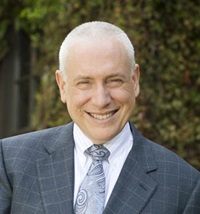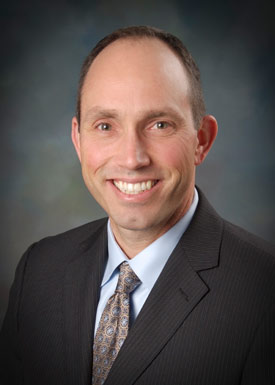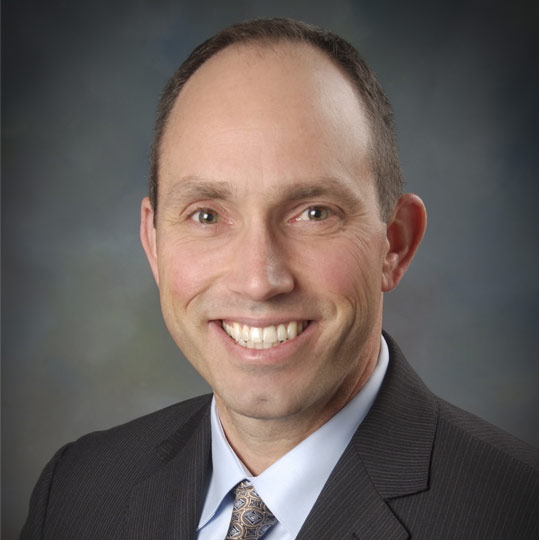Dr. Pate’s Prescription for Change
St. Luke’s Pete DiDio: Listening is Leadership as Health Care Transforms

I find that it is very difficult for those of us who went into health care to avoid jumping to solutions.
We want to help people. We want to fix their problems. I am particularly bad at this, as my wife often reminds me. I am halfway through solving your problem before you have finished telling me what the problem is!
St. Luke’s “always behaviors,” those ways of being that we ask all team members to practice, include listening. If I have already started problem-solving, I am not really listening to you.
I am working on improving on this, but I do wonder how often I did this in my practice of medicine. How much better our solutions are when we really take time to listen and to be present!
Here is today’s guest blogger, Pete DiDio, St. Luke’s Health System vice president of finance and controller, on the value of “always behaviors” in solving a very significant and difficult management problem.
- David C. Pate, M.D., J.D.

In August, I passed a milestone: I have been with St. Luke’s for 10 years. My St. Luke’s anniversary is very easy for me to remember, as it coincides with the formation of St. Luke’s Health System.
In my time here, I have been very involved as a leader working with our teams to develop and mature our business functions to support a health system with physical locations across our region, support our governing boards and assist in the development of our strategy to transform health care.
In my 10 years, due to the preference our communities have for St. Luke’s our organization has grown by more than 200 percent. For any business of our complexity, that type of growth requires consistent change management, leadership tenacity and continuous improvement.
The implementation of our integrated health care medical record system this fall is a sentinel event for St. Luke’s as it marks our maturation as a health system. It is not easy to move millions of patient appointments, records, prescriptions and documents, swap out dozens of very complicated computer systems and platforms and train hundreds of people, all at the same time. And then there’s the hard part, of preserving a very special culture while at the same time asking the people who bring that culture to life to change their thinking and work patterns in significant ways.
And while our organization was preparing for the transition, I had my own significant shifts to face in one of my most significant and basic departments. In this case, I was the executive responsible for the operations, and my personal commitment to excellence did not square with how we were serving our internal customers. I knew things needed to change.
My initial reaction was simple: Meet with the team, understand the issues, offer solutions, clear barriers and voila. The problem would be fixed. Right?
Well, not exactly. So let’s have more meetings, more discussions, ask more questions and then it will be fixed. Right?
Well, not exactly. After three months of going in circles and thinking we were on our way, it became obvious that the issues were more pervasive, and that we literally needed to start over.
Start over. But how do you start over with a process that involves thousands of payments each week? It seemed like it would be easier to change four tires on a car going 70 mph.
What I learned, and maybe it should have been obvious, was that the leadership needed to start with me. Here’s how I went about the needed improvements:
First, I listened. While I thought I was listening, I wasn’t. Inside my head, I kept hearing, “Just fix it.” I didn’t really want to take the time to listen. I have come to understand that my role, quite often, is to listen and not always fix. By just listening, asking clarifying questions and helping to turn what I heard into gap-filling solutions, we ultimately made headway.
Second, I assumed positive intent and allowed for input. Team members were not having this experience on purpose. For years, things had been a certain way, and they’d become accustomed to that status quo.
Third, I dug deep into what respect truly means. At one point, I met with one of my key leaders to completely change our approach. It turned into one of the toughest meetings I have had as an executive. Ultimately I moved forward, changing our approach and the group tackling the problem. And it became apparent that I hadn’t been asking; I was telling. This specific leader had all the competence and ability to effect the needed fixes, and ultimately proved to be the MVP in stabilizing the business unit. Since then, I have had the opportunity to follow up with another leadership moment, which is to right the wrong by simply apologizing.
I worked hard to understand the problem. I needed to really understand whether it was a matter of process issues, people issues such as poor performance, poor education or role clarity, or technology issues. Were we not utilizing software and integrated systems appropriately?
I then worked with the team to develop a strategy to address the problem. We ultimately created 16 interrelated solutions to fix the problems identified. Some strategies could be executed in a short time frame, while others will take several years to fully implement, given the complexities.
As a team, we were able to agree to a time frame, prioritize the issues, assign duties, ensure resources and carve out time to tackle the needed fixes. I am proud to say that after 13 months, we have been able to address our issues and have effectively fixed the problem. Everything about the business unit is different, and it could not have been done without the team effort.
My lesson learned was that, as a leader, it started with me, and that part of continuous improvement is not always about the process or a business unit, but about continuously improving myself as such. As I head into a second decade at St. Luke’s, and as health care in America continues to evolve at warp speed, I’m beginning to conclude that this is the sort of learning that leadership is really all about.
About The Author

Pete DiDio is vice president of finance and controller of St. Luke's Health System, based in Boise, Idaho.

